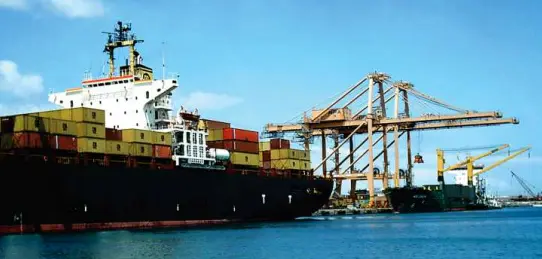Product Tankers: LR2 Fleet’s Growth Compounds Freight Rates’ Plunge

Fortunes in the LR2 product tanker market could be better. In its latest weekly report, shipbroker Gibson said that “it’s safe to say that LR2s have had a pretty torrid year to date, with earnings on the benchmark Middle East – Japan route averaging around $8,000/day in the second quarter, barely enough to cover fixed operating expenses. Many point to fleet growth as the primary issue, yet the trading LR2 fleet has remained fairly static, indicating that new deliveries are not the overriding problem. Whilst the overall LR2/Aframax fleet has seen substantial growth, with 53 vessels delivered in 2016 and 40 already for the year to date, the actively clean trading LR2 fleet size has remained stable at just under 200 vessels. Last year we counted at least 25 LR2s migrating into dirty trade, whilst many vessels went dirty on, or straight after their maiden voyage. The situation is of course dynamic, with owners having the option to clean up their tonnage if the LR2 market begins to show signs of sustainable returns. However, right now there appears little impetus to favour one market over the next”.
The shipbroker added that “on the demand side, getting a complete and truly accurate picture in the short term is challenging, with data sets subject to constant revision and often time lagged. However, export volumes out of the Middle East have been clearly pressured this year. Limited capacity additions have come online, whilst the Ruwais plant has seen at least 127,000 b/d taken offline following a fire, not to mention the Emirate stockpiling product to offer security against a potential interruption to gas supplies from Qatar. Lower export volumes from Saudi Arabia were also observed over the first half of the year. Combined with the UAE, it is possible that regional exports have slipped nearly 300,000 b/d”.
Gibson went on to note that “in recent years, another major demand outlet for LR2s has been the West/East naphtha arbitrage. However, the arbitrage from West to East remains a shadow of its former self. In 2016, volumes on the West/East naphtha run fell 31% compared with 2015 and have shown no signs of recovery this year. This trade was an important driver behind a strong Middle East market throughout 2015 and H1 2016, with vessels trading on the West East arbitrage being kept off the Middle East tonnage list for prolonged periods, particularly if a backhaul distillate cargo from North Asia to the West was obtained. With no growth in western arbitrage flows and newbuild crude tankers pricing cheaply on the backhauls, tonnage lists have generally lengthened, even though the outright LR2 fleet has hardly changed”.
According to the shipbroker, “the fundamentals may well follow a similar path in the short term, with little major impetus on the horizon. Repairs at Ruwais may run into early 2019, whilst a well-supplied naphtha market will keep the arbitrage pressured. All the while newbuild deliveries continue apace. However, for the past three years (following the start-up of a number of key refineries) August has seen LR2 earnings spike. With the LR2 market having firmed already in July, seasonal trends appear to be playing out as expected, the question is whether the August spike has come early or is just getting started. Beyond this, the next major boost on the horizon for owners may be 2019, with Ruwais expected to be back to capacity and new plants such as Jizan and Al Zour making an impact. However, the biggest fundamental shift may be 2020 when a tighter middle distillates market induces price volatility and increased trading activity”, Gibson concluded.
Meanwhile, in the crude tanker market this week, “activity wasn’t the problem for VLCCs this week – but heavy ongoing availability certainly was. Owners tried their best to rally but to no avail and rates remained stubbornly rangebound over the period. Lows of ws 44 to the East and ws 23 to the West via Suez now, and over the near term too. Suezmaxes slowed somewhat and rates eased off a touch towards ws 65 to the East and ws 25 to the West accordingly with no clear catalyst in sight for early change. Aframaxes bottomed out but little better than that – ticking over at around ws 90 to Singapore and similarly over the next fixing phase too”, Gibson concluded















![AIRBUS A380 [MORE THAN 600 PASSENGER’S CAPACITY PLANE]](https://cdn.tinn.ir/thumbnail/4jCp4EQvCU0b/IjHVrSYQrIAqIzXuTzADR7qLYX4idQT4nfq__26E5SCUPLMqfhWkWajvuO9Wfq1ql1TjV4dhkrHliNQU82kMpo2NNftT_NGEwHc9KXtN_rk731bmifa2IQ,,/airbus-a380-structure1.jpg)

Send Comment